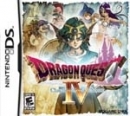| Conina said: Every Nvidia/AMD/Intel GPU currently sold is (of course) DX12-compatible, but the DX12-GPUs have fallen 3 percentage points over the last months while the DX8-GPUs (and older) have risen 4 percentage points. So probably the gained 4 percentage points "DX 8 and older" are new DX12-GPUs not properly tagged in the survey data, very probably Ampere and RDNA2 GPUs. Unspecified Nvidia GPUs are shown as "NVIDIA Graphics Device" in the data. For a long time this was around 0.5% and probably mainly Nvidia Quadro cards, but it has grown the last months 2.2 percentage points... these are probably Ampere cards. The remaining 1 - 2 percentage points gain of "DX 8 and older" could be RDNA2. The next months will show if my theory can hold up, when more and more Ampere and RDNA2 cards show up in the hardware survey and get correctly tagged as "DX 12 compatible", which would result in less than 3% "DX8 and older" GPUs and at least 93% DX12-GPUs. |
Something is very off with their charts right now. Just look at the CPU charts: The landing page gives AMD 26.91% market share, which would be a plus of 0.4 percentage points over last month.
However, if you click on the chart, it brings up something where AMD lost 2.18 percentage points instead:
Of note is that Intel would have increased in the 2.7-3Ghz category by a whooping 5.33 percentage points, while the 3-3.3Ghz range would raise by 1.8 percentage points, and everything else, both from Intel and AMD, is down.
So my thought is that some Asian Cybercafés got counted again, and their older hardware and software is what made made all the more modern systems drop down
The Nintendo eShop rating Thread: http://gamrconnect.vgchartz.com/thread.php?id=237454 List as Google Doc: https://docs.google.com/spreadsheets/d/1aW2hXQT1TheElVS7z-F3pP-7nbqdrDqWNTxl6JoJWBY/edit?usp=sharing
The Steam/GOG key gifting thread: https://gamrconnect.vgchartz.com/thread/242024/the-steamgog-key-gifting-thread/1/
Free Pc Games thread: https://gamrconnect.vgchartz.com/thread/248138/free-pc-games/1/




















